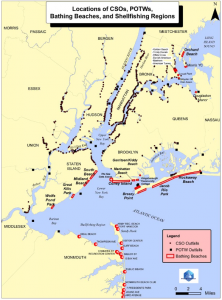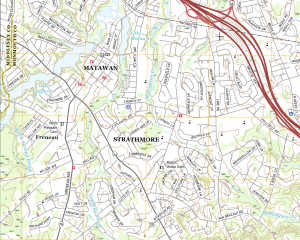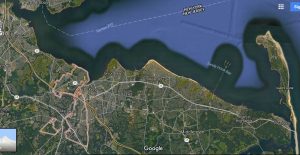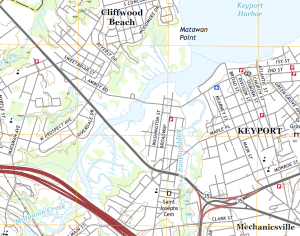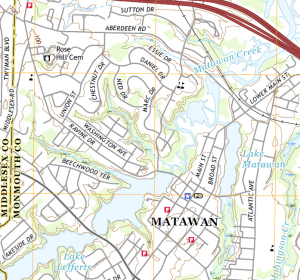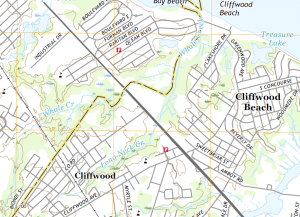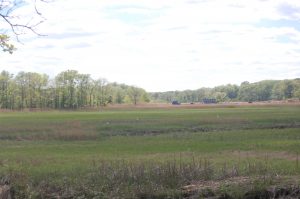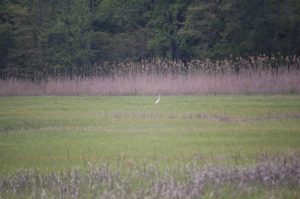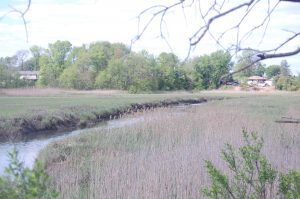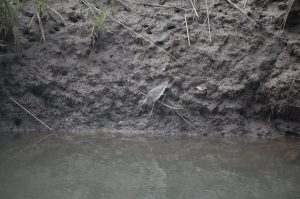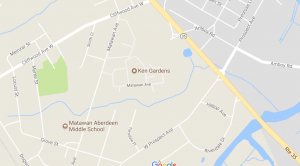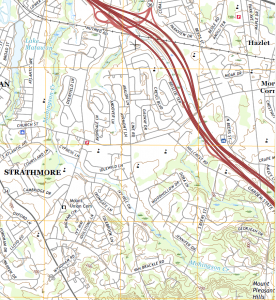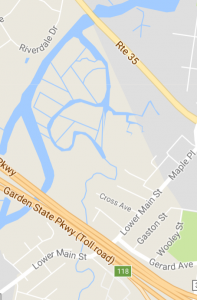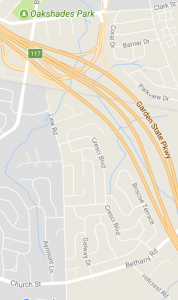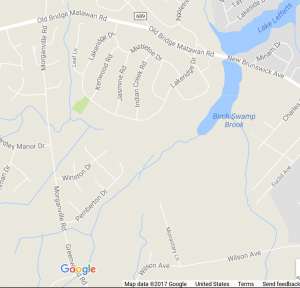The 2014 Integrated Water Quality Assessment Report is the latest edition the state’s assessment of how NJ waters are being used. The 2016 integrated report is still being finalized as of this writing, and the 2018 edition is just getting underway.The full 2014 report is 771 pages long and much public feedback goes on, so the time involved in production of these biennial reports is necessarily protracted.
But we can learn something from the 2014 Executive Summary:
- 63% of NJ waters rated as potential sources of drinking water were not being used for that purpose, primarily because of the presence of natural arsenic.
- While all NJ ocean waters were deemed swimmable, only 24% of all NJ waters (including lakes, rivers, streams) fully met requirements for recreational use. NJ DEP was targeting E coli and other pathogens as major culprits.
- Only 16% of NJ waters fully met requirements for the support of aquatic life. Two-thirds did not and the rest had not been assessed. Total phosphorus (TP) and other nutrient-related issues, were assessed as the primary cause of impairment. Temperature was assessed as impairing the trout population, which was fully supported in only ten percent of NJ waters designated for their use.
- 90% of NJ shellfish waters were rated as potentially harvestable but two-thirds did not meet requirements for such use. E coli was the issue.
- Less than one-half of one percent of NJ waters fully met requirements for fish consumption. Legacy pollutants in the food chain were the main reason for impaired use.
-
Declining water quality trends for nitrate, total dissolved solids (TDS) and chlorides were also observed. Ammonia reduction measures implemented at waste treatment plants oxidize ammonia to form nitrate, resulting in increased nitrate concentrations over time. Runoff from urban and agricultural areas, including runoff of salt used to control ice on roadways, are the likely cause of increased TDS and chloride concentrations over time.
The NJ DEP Bureau of Freshwater & Biological Monitoring was featured in an August 2017 episode of the Discover DEP podcast. They discussed the Fish and Headwaters’ Index of Biotic Integrity monitoring programs, also known as FIBI & HIBI., which use the status of fish and other aquatic species in northern and western NJ waters as useful measures of water quality there and downstream.
The Environmental Protection Agency says that states hoping to meet the parameters of the Clean Water Act should design state water monitoring systems that answer the following five questions:
1. What is the overall quality of waters in the State? Under Section 305(b) of the Act, the State determines the extent to which its waters meet the objectives of the Clean Water Act, attain applicable water quality standards, and provide for the protection and propagation of balanced populations of fish, shellfish, and wildlife (40 CFR 130.8).
2. To what extent is water quality changing over time? The State assesses and reports on the extent to which control programs have improved water quality or will improve water quality for the purposes of “. . . the protection and propagation of a balanced population of shellfish, fish, and wildlife and . . . recreational activities in and on the water” (40 CFR 130.8(b)(2) and 130.8(b)(1)). Under Section 319(h)(11) of the Act, a State with Section 319 grants reports on reductions in nonpoint-source loadings and related improvements in water quality. Under Section 314(a)(1)(F), a State reports on the status and trends of water quality in lakes. The State may address these requirements through the use of models (for load estimations) and by tracking trends in use assessments. The State also should be able to identify emerging environmental issues related to new pollutants or changes in activities within watersheds.
3. What are the problem areas and areas needing protection? Under Section 303(d), the State must identify impaired waters. The State should also identify waters that are currently of high quality and should be protected from degradation. In order to protect and restore waters, State monitoring and assessment programs should identify the causes and sources of impairment.
4. What level of protection is needed? The State establishes the level of protection that is being monitored against. For example, the State uses data from monitoring programs to conduct triennial reviews of state water quality standards, conduct use attainability analyses, develop and adopt revised designated uses and water quality criteria, establish water quality-based effluent limits in NPDES permits, establish total maximum daily loads, and assess which levels of best management practices for nonpoint sources are most appropriate.
5. How effective are clean water projects and programs? The State monitors to evaluate the effectiveness of specific projects and overall programs, including but not limited to Section 319 (nonpoint source control), Section 314 (Clean Lakes), Section 303(d) TotalMaximum Daily Loads (TMDLs), Section 402 NPDES permits, water quality standards modifications, compliance programs (Discharge Monitoring Report information), and generally to determine the success of management measures.

